News & Media
18-carat collaboration and cultural preservation
“We are commemorating Unisa’s anniversary in song. We are celebrating Unisa by celebrating South Africa’s musical heritage. Wow! That really tells you how important music is to the soul of a South African.”
Jessica Lapenn, Chargé d’ Affaires of the US Mission to South Africa, roused the audience to cheers at the South African Jazz Songbook Concert at the ZK Matthews Great Hall on 9 June 2018 as the Unisa Music Foundation and the United States Embassy in Pretoria teamed up to bring together high profile South African and American jazz artists in a musical collaboration on historic South African jazz works. The project included jazz workshops, a landmark CD recording, and a live DVD concert recording.
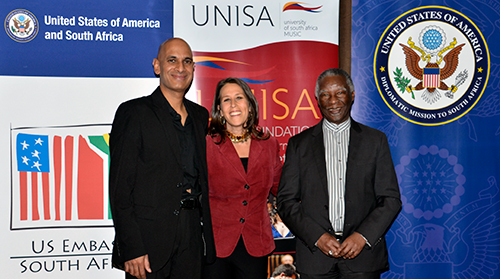
Prof Karéndra Devroop (Acting Director: Music, Unisa), Jessica Lapenn (Chargé d’ Affaires: US Mission to SA), and HE Thabo Mbeki (Chancellor of Unisa)
Spearheaded by Prof Karéndra Devroop, Acting Director of Unisa’s Music Directorate, the South African Jazz Songbook has been almost 20 years in the making. “I wanted to recognise and honour those composers who wrote some of the most amazing music I have ever heard.” He said that it was both cultural collaboration and cultural preservation to work with living artists to re-record some of South Africa’s landmark jazz compositions arranged for saxophone, full orchestra, piano, bass, and drums.
The featured American jazz artists included five world-class musicians, James Ford (trumpet), Chris Anderson (trombone), Bob Ferrazza (guitar), Michael Orenstein (piano), and Emma Adomeit (bass). They were joined by two of South Africa’s premier jazz artists, Devroop (saxophone) and Kevin Gibson (drums), and the Johannesburg Festival Orchestra, conducted by Gerben Grooten.
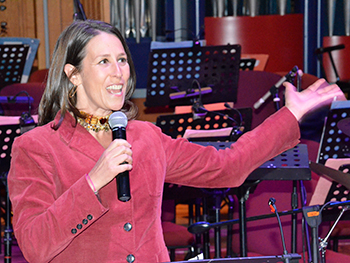
Jessica Lapenn (Chargé d’ Affaires: US Mission to SA)
Free communication across barriers
Lapenn thanked the visiting American musicians for making the trip to South Africa. “Physically, we all know it is a long and arduous journey. But musically, they probably feel very close to home, thanks to the commonalities that make the South African music scene feel incredibly familiar and welcoming to us Americans.”
In similar vein, Prof Mandla Makhanya, Principal and Vice-Chancellor of Unisa, pointed out the striking parallels in the development of jazz in both the United States and South Africa. He said that slaves gave birth to jazz on the plantations of New Orleans, singing of their pain, oppression, and longing for freedom, while in South Africa the situation was echoed during apartheid, with jazz sustaining the masses of the people who sought the very same ideals.
“From the beer halls and dance halls of Sophiatown to District Six, jazz was the music that enabled our people to freely express themselves, and find some measure of social pleasure during apartheid.” As in the USA, jazz in South Africa crossed racial, gender, economic, and cultural barriers and enabled people to communicate freely within the confines of this unique art form.
Affording access to music tuition
Prof Michael Temane, Acting Registrar of Unisa, used the occasion to remind the audience of the Unisa Music Foundation’s community music engagement programme, which provides access to music tuition for more than 1 000 disadvantaged South African youth from Soshanguve, Mamelodi, Hammanskraal, and many other historically disadvantaged communities. Many of these students, he said, had gone on to obtain the highest qualifications, including bachelors and master’s degrees, both in music and in other fields such as engineering.
The South African Jazz Songbook project also involved skills development in the area of music recording with music technology students from the Academy of Sound Engineering and Pretoria University involved on the technical side of the production. Some of Unisa’s community music engagement students and teachers performed with the Johannesburg Festival Orchestra on the night, a unique opportunity for the young students to be involved in a landmark project alongside world-class musicians.
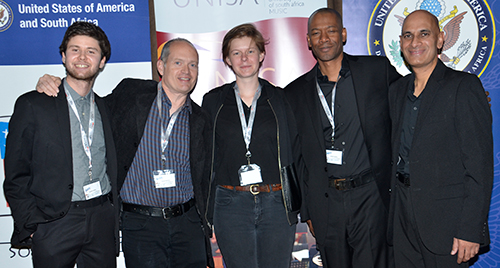
The musicians included Michael Orenstein (piano), Bob Ferrazza (guitar), Emma Adomeit (bass), James Ford (trumpet), and Karén Devroop (saxophone).
And all that jazz
And after the plaudits and accolades had been uttered, the music took centre stage, formed and focused by the sweeping strings and woodwinds of the orchestra and 18-carat solos from piano, bass, guitar, trumpet, trombone, and drums, with the mellifluously golden saxophone tones soaring over all.
Music tells stories, and each of the pieces on the programme had its own narrative, said Devroop. Included were landmark compositions such as Ntjilo Ntjilo, Lakutshon ‘iLanga, Pata Pata, Meadowlands, Angola, Monwabisi, and Cape Samba. All were arranged by legendary New-York-based arranger Trino Jimenez and Noel Stockton, one of South Africa’s foremost jazz artists and a highly prolific arranger and composer.
“A project like this takes it out of you,” Devroop quipped, “but one perk is that you get to pick the pieces and you get to pick the encore.” That included his own composition, Gone too soon, a haunting elegy to his mother.
Finally, as the last plaintive notes of Abdullah Ibrahim’s The wedding faded into the air and the audience dispersed into the dark, Lapenn’s words earlier that evening resonated: “Music—vital as it clearly is to the core of any human being—is ephemeral. If not recorded, it can disappear into history and be lost forever. As soon as the last breath passes through the saxophonist’s lips, as soon as the violin’s strings go still, as soon as the last chord dies, the music is gone. It makes you wonder: if music is in our soul, but we don’t know the songs our grandparents sang, did we really know them? Did we really ever know our own people?
“But! What happens if we record it, write it down, pass it along, and save it for those who come next? It builds those connections that would otherwise be lost. I think preserving and sharing musical heritage is one of the most important things we can do to understand ourselves, and each other, better.”
Watch a short video clip:
![]()
Watch an SABC interview here.
*By Sharon Farrell
Publish date: 2018-06-11 00:00:00.0
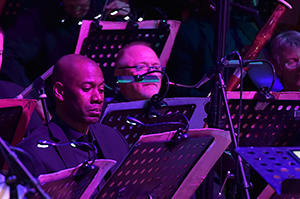
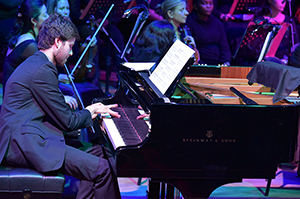
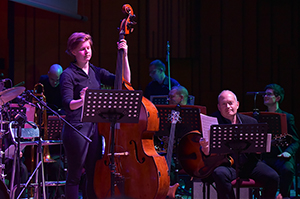
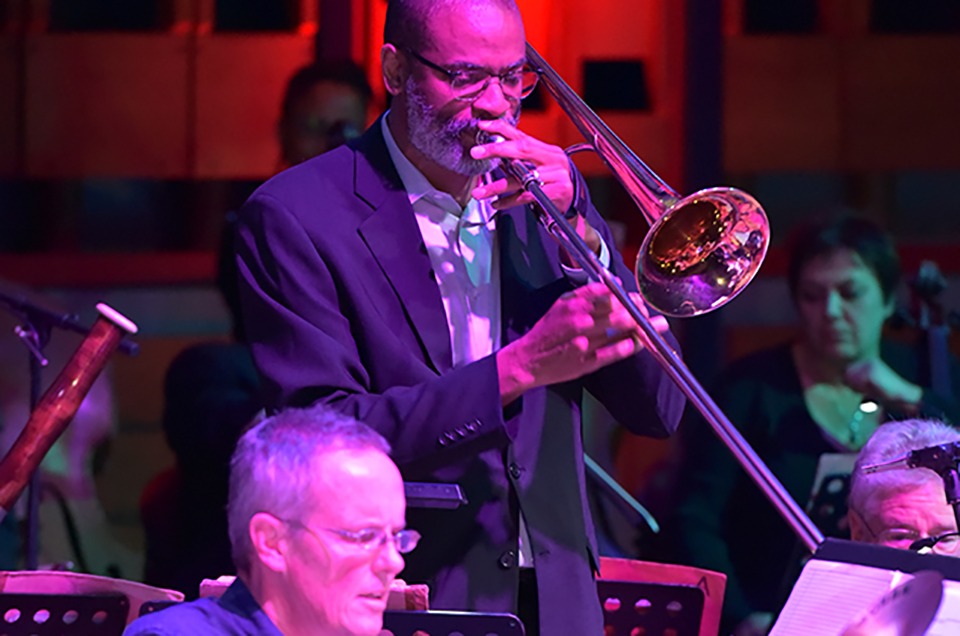
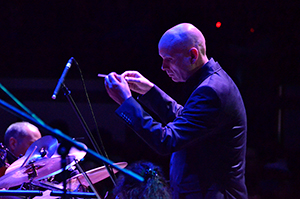
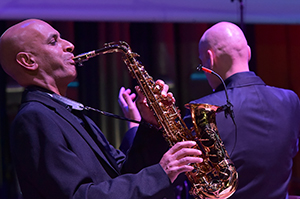

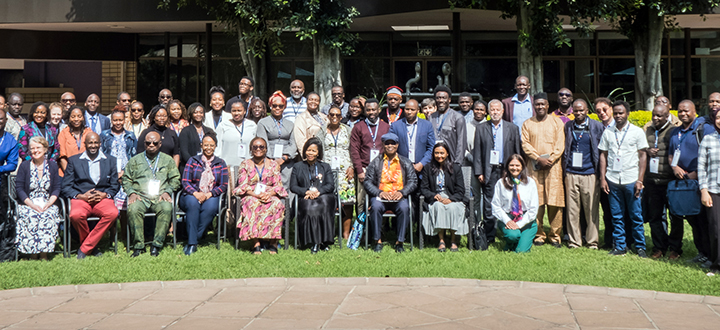 Social policy in post-Covid Africa: In search of an inclusive and equitable architecture
Social policy in post-Covid Africa: In search of an inclusive and equitable architecture
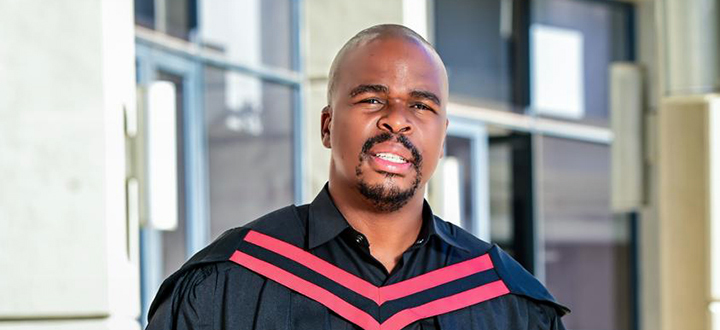 Education in pursuit of social justice
Education in pursuit of social justice
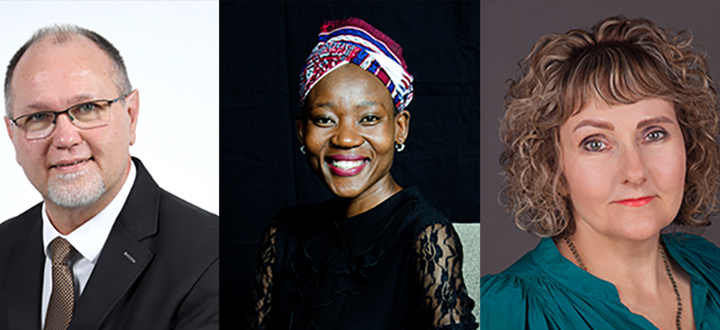 Unisa shows that developing countries are equal partners in research management and administration capacity development
Unisa shows that developing countries are equal partners in research management and administration capacity development
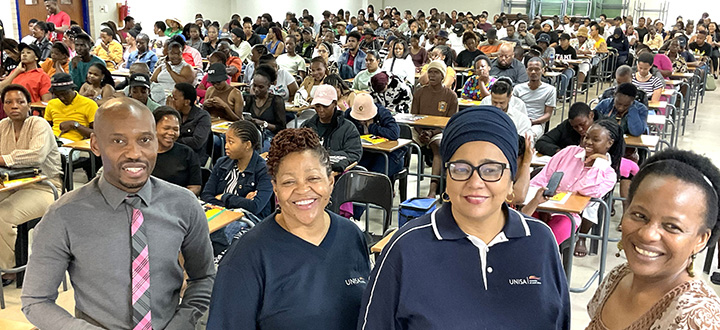 Unisa KZN Career Fair bridges the gap between students and employers
Unisa KZN Career Fair bridges the gap between students and employers
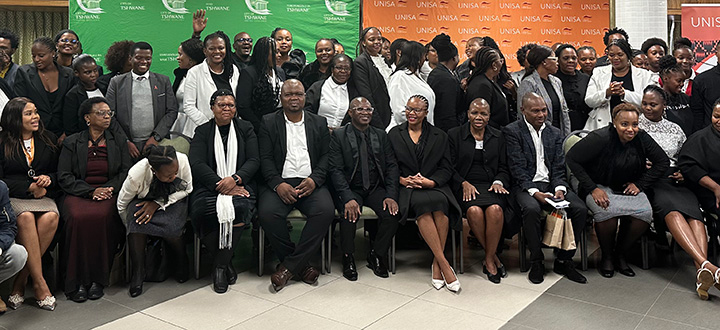 Unisa academics join hands to celebrate World Social Work Day
Unisa academics join hands to celebrate World Social Work Day